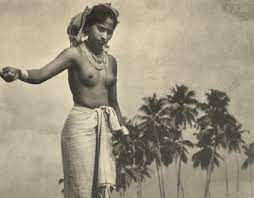Breasts, Breasts, Beasts
This week we talked about "Modest Fashion" while discussing the paper "Wrapped in Meaning: Modest Fashion as Feminist Strategy (2019)" by Tilna Rosenberg. Amongst other things, here we discussed how political action can come to be reduced to clothes/consumption/fashion, resulting in an oversimplification of the structural oppression and power dynamics. At the same time, it is important to understand how the meanings of fashion/clothing gets contextualized and decontextualized over time.
"Buy this cool progressive product from us -> you are a feminist now." This again goes back to the previous discussions about hegemonic reconfiguration from previous weeks – where it appears as if we have made progress but certainly have not. "Let us put this woman in a fashionable red hoodie but also with a hijab in our Nike commercial to make a political statement" - What is this if not a prop to signify diversity? Is this what feminism wants to achieve?
While talking about this reading, this one example from the context of South India came to mind. Until 1859, in Travancore, Kerala, India, women of lower castes were not permitted to cover their breasts in public settings. If they did cover their breasts, they had to pay a tax to the state which was called "Mulakkaram (Breast Tax)". The tax was imposed by the state which was under the influence of the upper-caste Brahminical patriarchy. It is also believed that the amount of tax depended on the size and the "attractiveness" of the breasts - the more the 'appeal', the more the amount of money they had to pay to cover them.
In order to revolt against this regulation of female bodies by the upper caste (Brahmins), Nangeli, a Dalit woman, chopped off her breasts in front of a tax collector. It is believed that the covering of the breasts was seen as a sign of "immodesty" - it was seen as something which makes the women look mysterious, hence, attractive to the men. It is interesting to see how no matter how naked or covered the female body is, 'the man' somehow still manages to make it all about himself. The male gaze is omnipresent. Makes you question whether you can ever be 'modest' if you have a female body.
At the same time, the above example somehow always brings the "Free The Nipple" campaign from 2012 to my mind. This movement aimed at revolting against (again) the regulation of female bodies. Men could easily go out in public topless, whereas if women did the same, they would be over-sexualized and seen as "indecent" or "immodest". Thousands of women ran bare-chested through the streets of New York (and other parts of the world) as a rebellious political act.
So, now, I ask myself, what is this blog about? Am I trying to bring out certain contrast between the two situations? Is this a blog about how women are so different and how their struggles are completely different? But what about how do the instances relate?
For the first context, "covered breasts" was a privilege and whereas for the second context, "covered breasts" was indicative of oppression. In one context, bare breasts were an imposition by the state, in the latter context, they were a symbol of freedom.
One wonders if the story is really about breasts.
Or covering them.
Or leaving them bare.
Or is the story about modesty?
Or is the story about who wants to be modest? What even is modest?
I am not sure. But I am certain it has always been at least about who is in a position to control to the definition of 'modest'.









Comments
Post a Comment